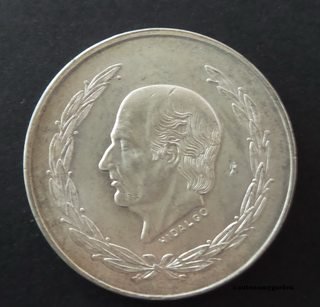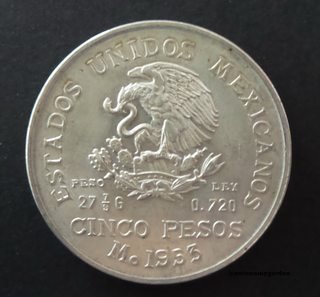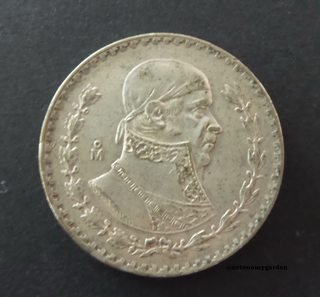The Mexican Peso: A Century of Currency Debasement (Part 4 – “The Economic Miracle” or Merely Illusion)
The period between 1930 and 1970 is described as a time of economic expansion and modernization of Mexico.
The migration of people from rural areas to urban centers in search of higher paying jobs in industry, increased “investment” in public works projects and a rising nominal GDP are all cited as evidence of this economic miracle.
What was actually occurring is the start of the same cycle that follows whenever a private, centrally controlled currency is imposed on a people by fiat.
The credit expansion in certain industries and municipalities leads to increased demand for labor and thus, higher wages. People enticed by these higher wages abandon their land (the one true source of material wealth) and rural homes to seek employment in densely populated urban centers. Mexico City, receiving a disproportional jolt of economic activity due to it being the seat of political and financial power brokering, saw explosive population growth.
Collapse of credit and rise of poverty and crime.
When credit contracts, economic activity slows and unemployment increases. This results in debts becoming unpayable and any collateral being transferred to the owners of the financial institutions that created the currency (credit) out of thin air with a cost no greater than making a book entry!
1950 – Un Peso coin is debased to .300 fineness with 4 grams of silver to the Peso (ASW .1286 oz)
 |
| 
The cost of the “public works” projects during the expansion years is paid for through economically crushing taxation, increased debt (future taxation) and/or currency debasement/note cancellation. Many times, these “public” assets are foreclosed on and sold off to other private interests at a fraction of the value.
Tlatelolco Massacre and The Dirty War
Symptoms of growing economic disparity between those on the receiving end of wealth redistribution schemes and those forced to pick up the tab (knowingly or unknowingly) begin to show through the façade of credit fueled “prosperity”. Sadly, as so often occurs, the disenfranchised are misled into demanding more collectivist non-solutions to the problems caused by central planner’s collectivist policies. The Hegelian Dialectic ensues with left-wing collectivists battling right-wing collectivists. Self-ownership and the righteousness of individuals defending themselves, their families and their property from institutional predation is never presented as an option.
1957 – Peso coin is debased to .100 fineness with 1.6 grams of silver to the Peso (ASW .0514 oz). Any reference to weight and purity have been removed from Peso coins
 |
| 
Central planners and their media mouthpieces hype the boom and take credit for the temporary jolt to the economy that an expansion of credit and currency supply produce. But when the illusion of the boom wears off and debts come due, blame is directed at the people and businesses having too much freedom. Greater central control through regulations and additional wealth redistribution schemes are sold as a way to fix the disparity. The cycle of power and wealth consolidation begins again…
Up Next: The Mexican Peso: A Century of Currency Debasement (Part 5 – From “Boom” to Bust)
Click here for Part 1 – Independence
Click here for Part 2 - The Constitution of 1917
Click here for Part 3 – Nationalization and Public Works “For the People”
*All coin photos are from my personal collection
Historical Source 1
Historical Source 2
Coin Info Source
All currencies similarly have the same fate.
I dont know exactly, but it's being said that most fiat currencies survive no more than 20 years before going into hyperinflation.